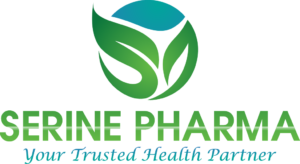Introduction
Pharma marketing plays a crucial role in the healthcare industry, bridging the gap between pharmaceutical companies, healthcare professionals, and patients. With the ever-evolving landscape of healthcare and advancements in medical research, marketing in the pharmaceutical sector has transformed dramatically. Gone are the days when traditional marketing strategies solely focused on sales representatives detailing products to doctors. Today, with digital innovation, regulatory complexities, and increased patient awareness, pharma marketing has become a multi-faceted discipline that demands strategic thinking, compliance, and a deep understanding of the market dynamics.
Key Strategies in Pharma Marketing
- Digital Marketing and Social Media Engagement: Digital platforms have revolutionized how pharmaceutical companies connect with their audiences. Companies leverage social media, websites, blogs, and video content to educate healthcare professionals and patients alike. Digital marketing allows for targeted outreach, personalized communication, and data-driven decision-making. For instance, patient education campaigns on social media platforms help build awareness about medical conditions and treatment options, while search engine optimization (SEO) helps drive traffic to company websites, enhancing visibility.
- Content Marketing and Thought Leadership: Providing valuable, evidence-based content helps pharmaceutical companies position themselves as thought leaders. White papers, research articles, webinars, and blogs are effective tools for engaging healthcare professionals by offering insights into the latest medical research, drug mechanisms, and treatment protocols. For patients, content marketing focuses on education, providing them with reliable information that helps them make informed decisions about their health.
- Multichannel Marketing: The integration of multiple channels—digital, in-person, and traditional media—enables pharma companies to create a cohesive marketing strategy. This approach ensures that messaging is consistent across all touchpoints, enhancing brand recognition and improving customer engagement. Multichannel marketing also allows for flexibility; companies can adjust their strategies based on what’s working best, using analytics and feedback from different platforms.
- Key Opinion Leaders (KOLs) and Influencer Collaborations: Collaborating with Key Opinion Leaders (KOLs) such as experienced doctors, researchers, and healthcare influencers can significantly boost a pharmaceutical brand’s credibility. KOLs have the trust of the medical community and can effectively communicate the benefits and science behind new treatments. These partnerships often extend to conferences, online webinars, and expert panel discussions, helping to build a strong scientific foundation for the brand’s messaging.
Challenges in Pharma Marketing
Pharma marketing faces unique challenges due to the highly regulated nature of the industry. Compliance with regulations set by bodies like the FDA, EMA, and other global health authorities is paramount. This restricts what companies can claim about their products and requires all marketing materials to be accurate, balanced, and supported by evidence. Missteps can result in severe penalties, loss of credibility, and legal consequences.
Another significant challenge is the growing emphasis on patient-centricity. Modern consumers are well-informed, actively researching medications, side effects, and alternative treatments before making healthcare decisions. Pharma marketers must address this shift by prioritizing transparency and providing accurate, easy-to-understand information that empowers patients rather than just pushing products.
Opportunities Ahead
Despite the challenges, the future of pharma marketing is bright, with numerous opportunities for growth and innovation. Advances in artificial intelligence (AI) and big data analytics are opening new avenues for personalized marketing. Predictive analytics can help companies understand patient needs and forecast market trends, enabling more targeted and effective campaigns.
Moreover, the rise of telemedicine and digital health platforms is creating new channels for reaching both healthcare professionals and patients. By integrating marketing efforts with digital health tools, pharmaceutical companies can offer holistic solutions that go beyond traditional drug sales, such as apps that monitor patient adherence or provide lifestyle advice.
Conclusion
Pharma marketing is an evolving field that requires a blend of traditional and digital strategies to succeed. As the industry continues to innovate, companies that embrace new technologies, maintain a patient-focused approach, and adhere to regulatory standards will be best positioned to build lasting connections with their audiences. By navigating the challenges and seizing the opportunities, pharma marketers can drive growth and contribute significantly to the advancement of global healthcare.

